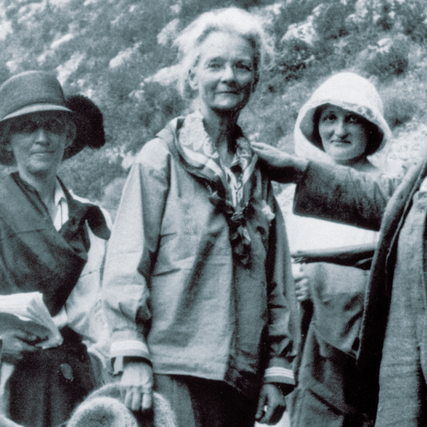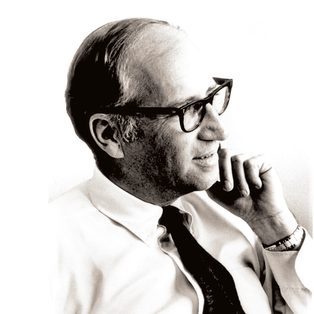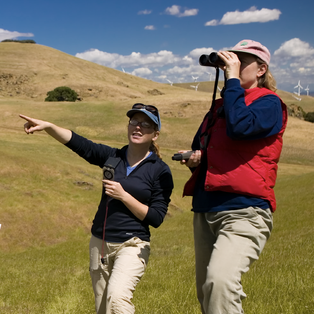Builders Tackle Emerging Priorities
Since the dawn of the university, Builders have stepped up for Berkeley to help provide resources for new schools and colleges, to set the stage for advancements in new and evolving fields of study, and to support brilliant faculty making incredible discoveries about the world and the universe.

Thanks to the generosity of leading philanthropists, spaces for three of the university’s distinguished schools were funded during these early years: education, business, and law.
No funds existed to start a department to train teachers until 1887. Within a few years, more graduate students were studying education than any other field, and the department became the School of Education in 1913. Increasing enrollment made space a critical problem until 1924 when Hannah N. Haviland donated funds to provide a home for the school: Haviland Hall.
Two years before the dawn of a new millennium in 1900, Cora Jane Flood (whose family wealth arose from the Comstock Lode of 1867) donated land and $463,000 in stock to support “some branch of commercial education.” The Regents quickly voted to establish the College of Commerce, only the second such school in the United States. Flood later gave her San Francisco home to the university as well, creating an endowment that today helps support the Walter A. Haas School of Business.
The study of law began in 1882 when Latin instructor William Carey Jones, Class of 1875, offered a course in Roman law. The curriculum continued to develop, and by 1903 the first three LL.B. degrees had been granted. Elizabeth Josselyn Boalt was an important early benefactor of the law school who gave funds for a building to house the Department of Jurisprudence — now known as Berkeley Law — and endowed two professorships.
The new law school building was built in 1951. The law library was named in memory of benefactor Garret W. McEnerney ’31, J.D. ’34, who served as a Regent for more than 40 years. The stature of the library was greatly enhanced by a $13 million gift and later bequest from Lloyd M. and Beatrice C. Robbins.
Almost since the university’s founding, private support has helped foster Berkeley’s excellence in research and teaching in the biological and environmental sciences.
In 1906, a young Oakland woman who felt passionately that California’s big bears and other representative species should be preserved decided to do something about it. For three straight summers, Annie Montague Alexander journeyed to Alaska and secured the big bear specimens that became the nucleus of Berkeley’s encyclopedic collections.
Alexander instigated the creation of the Museum of Vertebrate Zoology when she wrote President Wheeler and told him that if he would provide a small building to work in, she would take care of everything else. Wheeler accepted, and the cornerstone for Berkeley’s excellence in biology was laid.
Alexander and Louise Kellogg, Class of 1901, traveled the globe gathering more than 24,000 specimens for the university’s collections. Alexander chose Joseph P. Grinnell to be the first director of the new museum. For nearly 30 years, Grinnell trained generations of biologists who have shaped the development of vertebrate, systematic, ecological, and evolutionary science.
The new law school building was built in 1951. The law library was named in memory of benefactor Garret W. McEnerney ’31, J.D. ’34, who served as a Regent for more than 40 years. The stature of the library was greatly enhanced by a $13 million gift and later bequest from Lloyd M. and Beatrice C. Robbins.
More recently, Paul C. Silva Ph.D. ’51, an internationally known expert in marine algae, endowed a fund to support the curatorship of the Center for Phycological Documentation in the University Herbarium. The center houses one of the world’s largest collections of phycological literature and unique files of nomenclatural, bibliographic, and biographical data, which he began compiling in 1950. Silva’s partner, the late Lawrence R. Heckard Ph.D. ’56, the former curator of the Jepson Herbarium, endowed a fund that provides grants for the study of vascular plants in California and other areas of North America.
The Wayne and Gladys Valley Foundation and Ann and Gordon Getty made lead gifts for a state-of-the-art renovation that was completed in 1995. Their donations, together with the gifts of many other benefactors, revamped the now-renamed Valley Life Sciences Building, one of several projects undertaken to revitalize the biological sciences. It includes research and teaching facilities as well as the Museums of Paleontology and Vertebrate Zoology, the University and Jepson Herbaria, and the Marian Koshland Biosciences and Natural Resources Library. Three new departments were also established during the time of the ambitious facilities updates: Integrative Biology, Molecular & Cell Biology, and Plant Biology.



